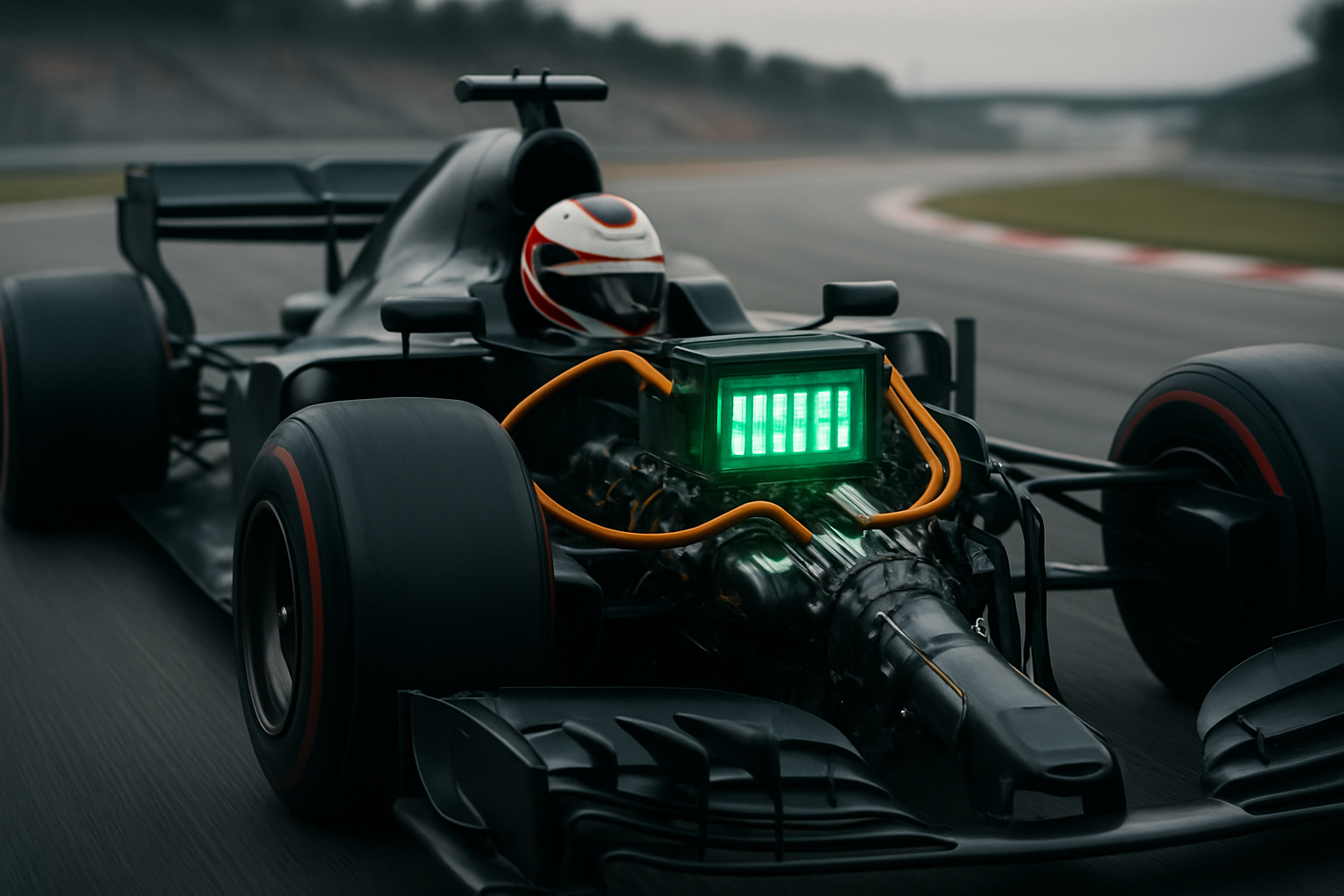Kinetic Energy Recovery Systems: Redefining Motorsport Efficiency
From the roar of engines to the screech of tires, motorsports have always been synonymous with raw power and adrenaline. But beneath the spectacle lies a world of cutting-edge technology, constantly evolving to push the boundaries of performance. One such innovation that has revolutionized racing in recent years is the Kinetic Energy Recovery System (KERS). This ingenious technology not only enhances speed but also introduces a new era of energy efficiency in motorsports.

The Genesis of KERS in Motorsports
The concept of energy recovery in vehicles isn’t new, but its application in high-performance racing environments presented unique challenges. KERS found its first major platform in Formula 1 in 2009. The goal was clear: harness otherwise wasted energy to boost performance while promoting energy efficiency.
Initially, teams struggled with the added weight and complexity of KERS systems. Early versions were bulky, affecting vehicle balance and handling. However, as with many innovations in motorsports, rapid development led to more compact, efficient systems. Within a few seasons, KERS evolved from an optional extra to an integral part of a competitive racing package.
How KERS Works: A Technical Overview
At its core, KERS converts kinetic energy from braking into storable power. This process involves several key components working in harmony:
-
Energy Capture: During braking, the vehicle’s kinetic energy is converted to electrical energy through a motor-generator unit connected to the drivetrain.
-
Energy Storage: The captured electrical energy is stored in either high-performance batteries or mechanical flywheels, depending on the system design.
-
Energy Deployment: When activated, the stored energy is released back through the motor-generator unit, providing an additional power boost to the wheels.
The entire process happens in milliseconds, allowing drivers to deploy extra power strategically during a race. This instantaneous power delivery can make the difference between overtaking a competitor or defending a position.
Impact on Racing Strategy and Driver Skills
KERS has fundamentally altered racing dynamics. Drivers must now manage an additional resource, deciding when to harvest energy and when to deploy it for maximum advantage. This added layer of strategy has made races more dynamic and unpredictable.
For example, a driver might choose to conserve KERS energy through a series of corners, then deploy it on a straight for a crucial overtaking maneuver. Alternatively, they might use it defensively, activating KERS to maintain position against a charging opponent.
This new dimension requires drivers to develop additional skills. They must maintain awareness of their energy levels, predict opponents’ strategies, and make split-second decisions on energy deployment, all while navigating at high speeds.
Engineering Challenges and Innovations
Implementing KERS in racing vehicles presented numerous engineering challenges. Weight management was crucial; every gram added by the system needed to be offset by performance gains. This drove innovations in lightweight materials and compact designs.
Heat management also proved critical. The rapid energy conversion and storage processes generate significant heat, which can affect system efficiency and reliability. Engineers developed advanced cooling solutions and heat-resistant materials to address this issue.
Moreover, integrating KERS with existing vehicle systems required rethinking entire drivetrain designs. This led to holistic approaches in vehicle engineering, where every component was optimized to work in harmony with the energy recovery system.
Beyond the Track: KERS in Road Cars
The development of KERS in motorsports has had a trickle-down effect on consumer vehicles. While not directly transferable due to different operating conditions, the principles behind KERS have influenced the design of regenerative braking systems in hybrid and electric vehicles.
In road cars, these systems help improve fuel efficiency and reduce emissions. The experience gained from high-stress racing environments has led to more robust and efficient energy recovery systems for everyday use. This transfer of technology from track to street exemplifies how motorsports continue to drive automotive innovation.
The Future of Energy Recovery in Motorsports
As motorsports continue to evolve, energy recovery systems like KERS are expected to play an even more significant role. Future developments may include more advanced energy storage solutions, such as supercapacitors or improved flywheel designs, offering higher power density and faster energy transfer.
There’s also potential for expanding energy recovery beyond just braking. Systems that capture energy from exhaust heat or suspension movement are already being explored. These advancements could lead to even more efficient and powerful racing machines.
Furthermore, as motorsports increasingly focus on sustainability, KERS and similar technologies will be crucial in balancing performance with environmental responsibility. They demonstrate that efficiency and high performance are not mutually exclusive, paving the way for greener yet still thrilling racing experiences.
In conclusion, Kinetic Energy Recovery Systems have ushered in a new era in motorsports, where energy management is as crucial as raw power. This technology not only enhances performance but also drives innovation, challenging engineers and drivers alike to rethink their approach to racing. As KERS continues to evolve, it stands as a testament to the ingenuity in motorsports and its role in shaping the future of automotive technology.





